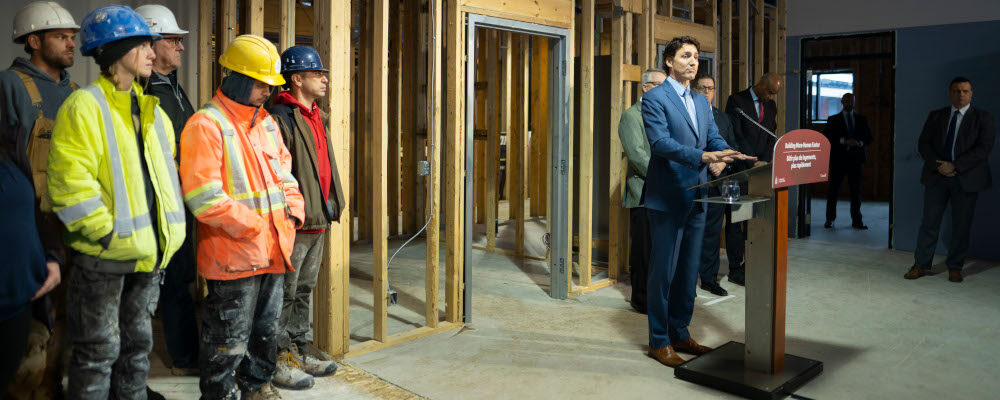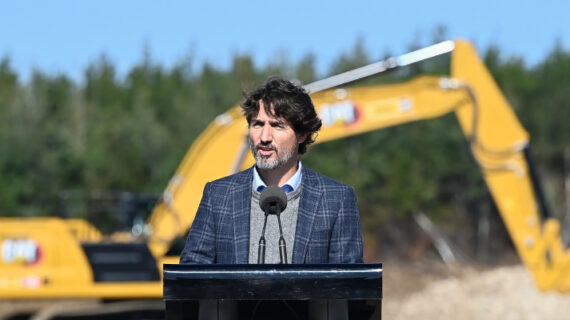Evidence of Canada’s housing crisis continues to mount. Rising interest rates and more stringent mortgage regulations have seemingly done little thus far to slow down the market. Sale prices and rental costs continue to reach historic highs in major cities and increasingly outside of them.
The Trudeau government has gradually come to recognize the issue’s urgency. The appointment of Sean Fraser as the new federal housing minister reflects an effort to better address it through a combination of incremental policy and stronger communications.
The main problem however may be how the government and adjacent experts and scholars have come to conceptualize the problem. So much of their attention is focused on increasing the supply of affordable housing rather addressing housing affordability in the market-based share of the housing market. Yet the distinction is key to developing policies that actually respond to growing public concerns.
The housing market can be understood as a spectrum or continuum across which all forms of housing “stock” is accounted for: shelters, social housing, rental, and every shape and size of single-family homes (e.g. townhouse, duplex, single detached, and so forth). This spectrum of housing types has corresponding prices, ownership and rental models, and demographics.
As part of this spectrum, there’s non-market housing which includes public housing, non-profit housing and non-profit co-operatives and market-based housing which refers to homes that are sold or rented according to market forces. The former represents about 6 percent or so of the overall housing market. The vast majority of Canadians live in the latter.
Both, of course, are important and inter-related in some broad ways. But the government has failed to explain how its focus on expanding affordable housing (which may be a good idea in and of itself) will manifest itself in the market-based sharing of the housing market. There’s evidence that it may help those on the margins of market-based housing but it’s far from obvious that it will improve housing affordability for most Canadians.
It’s important therefore that the Trudeau government and its provincial counterparts turn their collective attention more fully to the entire housing market, including the more ambitious construction of market-based housing.
New home construction sets the economic, or market, baseline for housing in any given area. After all, “affordable housing” is pegged to new home construction, hence why it’s often referred to as “below market value housing.” There’s a case in fact that the causal relationship between affordable housing and market-based housing goes the opposite way than one would think based on the government’s disproportionate focus on the former. Slowing the growth in market-based prices (or even reducing them) through more building would actually help to stabilize prices for affordable housing.
But, more fundamentally, the best way to stabilize prices in the market-based share of the market is to bring supply and demand into greater equilibrium by expanding supply. Population growth exceeded 1 million in 2022. Yet we have historically built something like 285,000 homes per year. That gap will need to close or the country’s housing affordability challenges will continue to persist.
It speaks to the inherent problem with the federal focus on affordable housing over market-based housing. The longer that governments narrowly focus on affordable housing as the rest of the housing continuum continues to become less accessible to Canadians, the risk that more and more people fall out of market-based housing and overall demand for government-funded affordable housing will grow. The calls for more government funding from advocates will inevitably follow. Suffice it to say, it’s expensive to build affordable homes when the entire market is increasingly unaffordable.
Recent data for Scotiabank Economics makes this point quite clearly: “While the National Housing Strategy has provided an important framework to anchor actions, its $78.5 bn funding pales in comparison to Canada’s housing stock at $3.8 tn (or 2 percent which doesn’t even keep pace with annual depreciation).”
The government simply cannot spend its way to affordability when it only focuses on one end of the spectrum—particularly the one that touches on a relatively small share of the overall market.

Thus far, however, Minister Fraser hasn’t signaled a major policy departure from his predecessors. He recently doubled down on the government’s emphasis on affordable housing while at the same time proclaiming that, “Our goal is not to decrease the value of [a homeowner’s] home.”
The Conservatives, by contrast, seem to understand the magnitude and nature of the problem. They’re focused primarily on the market-based share of the housing market and are prepared to use public policy to “build, build, build.” It’s no surprise therefore that their housing policy seems to be connecting better with Canadians.
It’s bigger than politics though. This “whole-of-market” approach is a useful framework for actually addressing housing affordability. It’s up to the Trudeau government for a proper reset on the housing file and match the Conservatives with its own whole-of-market approach to Canada’s housing crisis.




